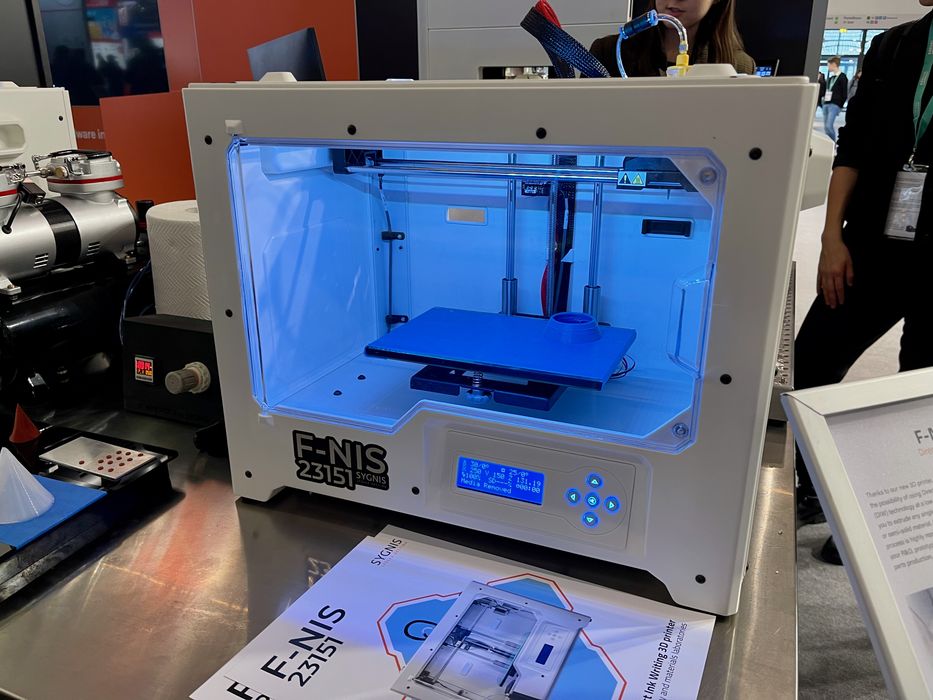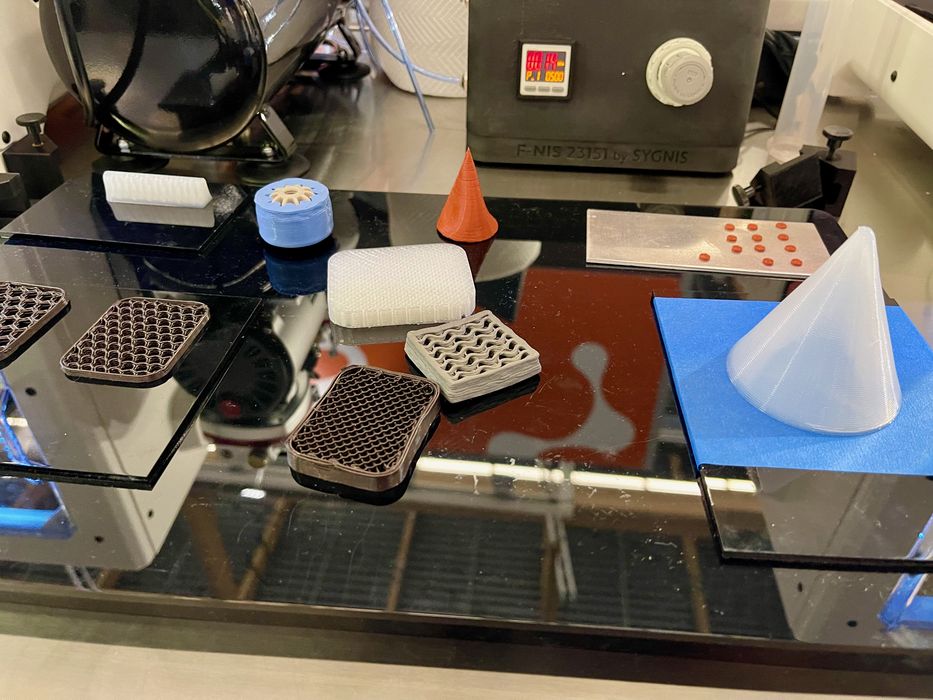
Sygnis’ F-NIS 23151 is a very unusual 3D printer, and not just because of its cryptic name.
At first glance, the F-NIS 23151 would appear to be a standard Flashforge desktop 3D printer, and that wouldn’t be surprising, because it’s built using one.
The difference is in the extrusion technology: the F-NIS 23151 is a DIW 3D printer, “Direct Ink Writing”.
Introduction to DIW 3D Printing
DIW is a technology used to extrude thin streams of liquid or near-liquid materials, and has been used in the past for experimental electronics 3D printing or unusual flexible materials. Typical materials would include gels, resins, and pastes.
F-NIS 23151 Specifications
The Sygnis F-NIS 23151 has a modest build volume of 220 x 140 x 110 mm, and has a single extrusion head.
The nozzle is powered by air pressure (up to 400kPa), which is used to push material from cartridges through the nozzle for deposition. It’s possible to heat the nozzle to 60C, and even up to 140C for an optional steel toolhead, but the need for heat depends utterly on the materials being extruded. The system provides an extremely precise mechanism for extruding materials.
The print platform can be heated to 120C, which is quite hot.
Many DIW materials are UV-curable, and the Sygnis F-NIS 23151 optionally includes a UV curing system that can work with either 365nm or 405nm materials.
How the F-NIS 23151 is Used for Research Laboratories

You might be wondering what this machine would be used for. Sygnis is targeting research laboratories with this device, as it is an easy to use — and easy to afford — DIW system for experimental materials. They explain:
“The project implemented a precise pneumatic extrusion system. This combination provides the user with a simple and reliable tool, helpful in the initial stages of proof-of-concept or as a universal base for prototyping proprietary materials in 3D printing.
F-NIS 23151 will be used in industry, chemical and material laboratories and among research groups working on new materials, flexible electronics, ceramic insulators, UV cured materials, silicones and conductive pastes.”
The configuration of the F-NIS 23151 is somewhat flexible, with three different models available and a raft of different options to suit every lab’s needs.
While there are more precise and larger systems available, they are more expensive. The idea here is that the F-NIS 23151 would be used at the initial stages to provide proof of concept for a new material before it moves on to other equipment that is larger and more expensive to operate. Meanwhile, the price of the F-NIS 23151 is said to be near €5000 (US$5400).
This is a highly niche product that certainly won’t resonate with everyone. However, for those laboratories that are researching new materials, it could be ideal.
Via Sygnis (Polish)
